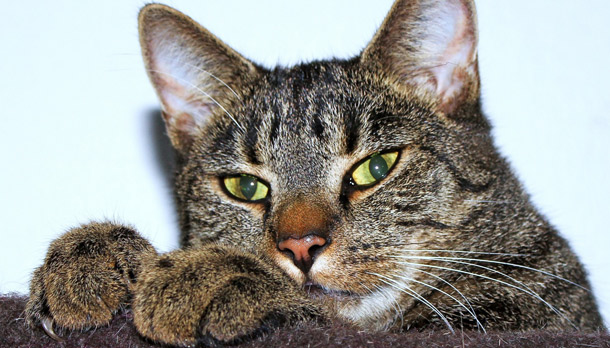CATS’ LOW-STRESS VET VISITS BEGIN AT HOME

A lot has been said about why to take your cat for regular veterinary visits, but some owners may also need advice on how to get kitty in the carrier, the car, and the clinic without a battle.
Dr. Kelly Ballantyne, a veterinarian with a special interest in animal behavior, practices at the University of Illinois Chicago Center for Veterinary Medicine. She has trained the veterinary staff there to handle every patient in ways that minimize the animal’s stress, but she also understands that, for a lot of cats, anxiety starts at home.
Dr. Ballantyne offers the following recommendations, based on the American Association of Feline Practitioners 2011 Feline Friendly Handling Guidelines, to make your cat’s veterinary experience as pleasant as possible.
Lesson 1: Carrier = Good
Teach your cat to associate the carrier with good things so she will go into the carrier voluntarily. Leave the carrier out in a room that your cat frequents at all times. Place a soft blanket or bed inside the carrier to encourage her to use it as a resting area. If she investigates the carrier, toss in a favorite treat or toy.
Lesson 2: Take Your Time
On the day of your appointment, locate your cat well before you need to leave the house and encourage her to enter the carrier on her own.
Lesson 3: Bring Blankie
To increase your cat’s comfort while traveling in the car and while at the clinic, bring items that carry a familiar scent for her, such as a favorite bed, blanket, or toy.
Lesson 4: Schedule for Quiet Times
If your cat has become very upset during veterinary appointments in the past, mention this when scheduling your appointment so the veterinary staff can prepare for her arrival. They may be able to schedule you at a time of day when there will be fewer appointments, allowing your cat to be placed in an exam room and seen right away to minimize stress.
Lesson 5: Be a Role Model
Your emotions can affect your cat’s emotions. Try to remain calm and positive during your appointment.
Lesson 6: Practice, practice, practice
Rehearse veterinary examinations at home and pair the handling with positive rewards such as petting, praise, or treats. You can practice handling the paws, looking in the ears, opening the mouth, and feeling over the legs and body, unless you are concerned that your cat may become aggressive with this type of handling at home.
Lesson 7: Post-visit Re-entry Plan
Because you cat brings home the scents of the veterinary clinic when she returns home, the cats that stayed home may not recognize her and may attack. Leave your cat in the carrier for a few minutes to see how all of your cats react to her.
If you have experienced this problem before, put your cat in a safe quiet room with food, water, and a litter box for at least 24 hours. Feed your cats or play with them on either side of the door and wait until they appear consistently calm on either side of the door before letting them together.
If you would like additional advice about calming your kitty, please contact your veterinarian or make an appointment for a behavioral consultation with Dr. Ballantyne.

Dr. Kelly Ballantyne
Veterinarian
